A brief history
Introduced in the Seiko “Number 2” catalogue that came out in 1967 (Seiko’s catalogue numbering got off to a confusing start, with “Number 1” being from 1966, rather than numbering two catalogues in the same years as numbers 1 & 2), the 62GS series of watches were the first automatic Grand Seikos.
A total of four distinct references were launched, with time and date references 6245-9000, and time and day-date references 6246-9000 both available cased in either stainless steel, or gold capped stainless steel.
The keen-eyed subscriber (or those who recall the article I wrote on this catalogue) will notice that the watches pictured are not actually what we now know as the 62GS series, rather, they are the earlier Seikomatic Chronometers.
We know for a fact however that what are being represented in the catalogue are “true” Grand Seikos, because the Japanese text describes them as so (the text immediately under the images reads “Grand Seiko 39/35 jewel”), and the “G” in the catalogue reference code of 62GAW/C identifies them as such.
The Seikomatic Chronometers have the exact same case-movement references as the 62GS series, and as far as I am aware - excepting the dial -are identical in all respects to the Grand Seikos that would take their place. In the earlier “Number 1” catalogue from 1966, the exact same images are used, except the watches are described as “Seikomatic 39/35 jewel”, and just have 6245 and 6246 as their identifying catalogue reference codes.
Whilst I don’t believe there is anything officially written down, nor directly acknowledged, regarding the rationale for the rebranding of the Seikomatic Chronometers to Grand Seiko, it is clearly down to Seiko having to drop the word “Chonometer” from all watches in its range due to the Swiss complaining that no watch - unless it had been independently tested in Switzerland - could be described as such.
This was a move that directly led to the creation of the “Grand Seiko Standard”, and the rest, as they say, is history.
As is so often the case with all things Seiko, it is not possible to pin down a specific date at which the rebranding of the 624x caliber watches occurred. The only way we can really date the watches is by the first two digits of the serial number on the caseback, and there is an overlap in early 1966 where we see examples of both Seikomatic Chronometers and Grand Seiko 62GS references being produced in the same month.
All production of the 62GS series watches in 1966 has the movement-case code suffix “-9000”, and can easily be identified by the 14k gold lion caseback medallion, with the lion the indicator that the watch meets chronometer standards.
Watches manufactured in 1967 and 1968 have the movement-case suffix “-9001”, and the Lion medallion is changed to the GS one, indicating the movement meets the Grand Seiko Standard.
As is the norm, collectors tend to gravitate to the earlier examples of references, and with the added attraction of that lion caseback medallion, it is hardly surprising that the 624x-9000’s are more sought after than their later couterparts.
There is an exception though…
The Grand Seiko 6246-9001 in cap gold with -9010 dial
In addition to the eight standard references in the 62GS series (2x movements, 2x case materials, all in -9000 and -9001 variants) that are represented in the Number 1 (1966) and Number 2 (1967) Seiko catalogues, there are two variants that are not seen in any publication.
The 62GS was the second Grand Seiko to be designed by Taro Tanaka, and - even with its bezel-less case - it is clear that the design of the watch adheres very closely to what became known as the “Grammar of Design”, or latterly, the “Grand Seiko Style”.
Most particularly evident on the 62GS are the wonderfully polished hour indices and hands -
The late 1960’s was a period of very rapid development for Grand Seiko, and the low-beat 62GS and 44GS (the former ticking away at 19800 bph and the latter at 18000 bph) both had very short lifespans.
The 62GS only made appearances in the Number 2 catalogue of 1967, and the confusingly titled 1968 Number 1 catalogue. In the second half of 1968, the 36000 bph 61GS series was launched as its direct replacement, debuting in the 1968 Number 2 catalogue.
Why am I discussing the 61GS series in a newsletter selling a 62GS? Well, let’s take a look at a photo of one…
If you compare the dial indices and handset with that of the 6246-9000 pictured earlier, you will immediately notice that we no longer have flat polished tops to the hands and indices.
Instead, the hour and minute hands have a black (onyx filled?) line running down their centers, and the top surface of each index is also black, rather than mirror polished. The rationale for this change may well be down to production constraints. The volume - not to mention variety - of watches being produced at Grand Seiko shot up in the latter years of the 1960’s. I don’t have any actual figures, but it is very clear when we look at just how many survive today, there were way more 61GS being produced than the earlier 44’s and 62’s.
Very possibly, it simply wasn’t feasible to continue to produce those incredible hand finished mirror-polished indices and handsets in the numbers required, and so Grand Seiko implemented an alternative design to keep the high legibility of the dial. Rather than rely on light and shadow to highlight the handset and dial furniture, use direct contrast instead.
This was obviously a major change to what we had seen before with the implementation of Tanaka-san’s design guidance in the 57GS and 62GS, and whilst hinted at with the brushed top surface of the 44GS, a radical departure from one of the main tenets of the “Grammar of Design” was to come with the introduction of the 61GS series.
Adios, Grammar of Design
And finally, I get around to discussing the watch for sale!
In some ways, the -9010 dial variant of the 6246-9001 is possibly one of the most significant vintage Grand Seikos ever to be produced. Perhaps at the time it was just a natural progression of an ever evolving brand design language, but looking back from today - where such emphasis is placed on the mirror-polishing of handsets and dial furniture - it seems quite an extraordinary step to make.
Here’s an interesting challenge - following the introduction of this variant of the 62GS, can you think of a single vintage Grand Seiko that features the flat mirror-polished hands and hour markers of the Grammar of Design?
I have only ever seen examples of these variants - which exist in both stainless steel and cap gold cases, but only with the 6246 day-date movement - with case serial numbers indicating production in just May and June of 1967. Based on the number of examples I have seen over the years, my conjecture would be that they constitute well under 1% of the total production of 62GS.
They are very, very rare.
What differentiates them from the regular 62GS references is of course the filled black line down the center of the hour and minute hands, and the black tops to the hour indices.
Why they were created will - as with watches such as the AD dialed first Grand Seiko - probably forever remain a mystery, but I don’t think it’s much of a stretch to consider that possibly they were manufactured to test the market’s reception to the radical design language change that was going to be introduced by the 61GS series in the latter half of the following year.
Condition and price
Case
As will be evident in the video, this is clearly a watch that could no doubt tell a few stories of past abuse!
From the screen-grab above, we can see plenty of evidence of dings and scratches in the (compared to stainless steel) relatively soft exterior 14K gold cap, and at some time - or multiple times - in the past, someone has done what they can to polish these out.
This is certainly neither safe queen nor drawer find, but of course the issues evident in the video are much magnified, and nowhere near as obvious in normal viewing.
In the caseback photo above, you can see the typical wear and tear that we would expect to find on the medallion for a watch that has clearly had a lot of wrist time in the 56 years since it was manufactured.
Dial
Also evident in the video is that the dial on this watch does have a lot of spotting, clearly visible from some angles, not so much from others. As with the case, these blemishes are a lot more obvious in the high magnification video than they will be when viewing the watch with the naked eye, but regular readers will know I do like to over-stress any issues! For what it’s worth, viewing the video on my 21 inch wide monitor is effectively a 10x magnification.
Movement
Experts with eager eyes will have spotted that the currently installed crown is not the correct one, but fear not - the watch will be off to my watchmaker tomorrow, and will be accompanied by a genuine NOS replacement crown that will be fitted as part of the full service. You can see this crown resting on a lug in the caseback photo above.
Price
I was initially planning to list this for $2,000, but having now written it up, I think that might have been a little hopeful.
Whilst it is of course an extraordinarily rare reference from the vintage Grand Seiko back catalogue, the condition of the case and dial sadly don’t measure up to what one might hope to find, and so I’m going to put it out for $1,600. This price includes the cost of the service, and fully insured worldwide courier delivery with FedEx.
For those who have a few vintage Grand Seikos in their collection already, this is a great opportunity to pick up an example of an intriguing - and very rare - variant of Grand Seiko’s first automatic watch.
As per usual, this newsletter will be going out first to paid subscribers, who can take 10% off the listed price (bringing the price to $1,440) if purchased within the first 7 days. Should the watch still be available on August 14th, the newsletter will then be forwarded to all subscribers.
If you have any questions regarding the watch, please don’t hesitate to drop me a line - if you are reading this newsletter as an email, simply reply to the email. If you are reading in the app or on the web, email me at the usual address (contact at thegrandseikoguy dot com).



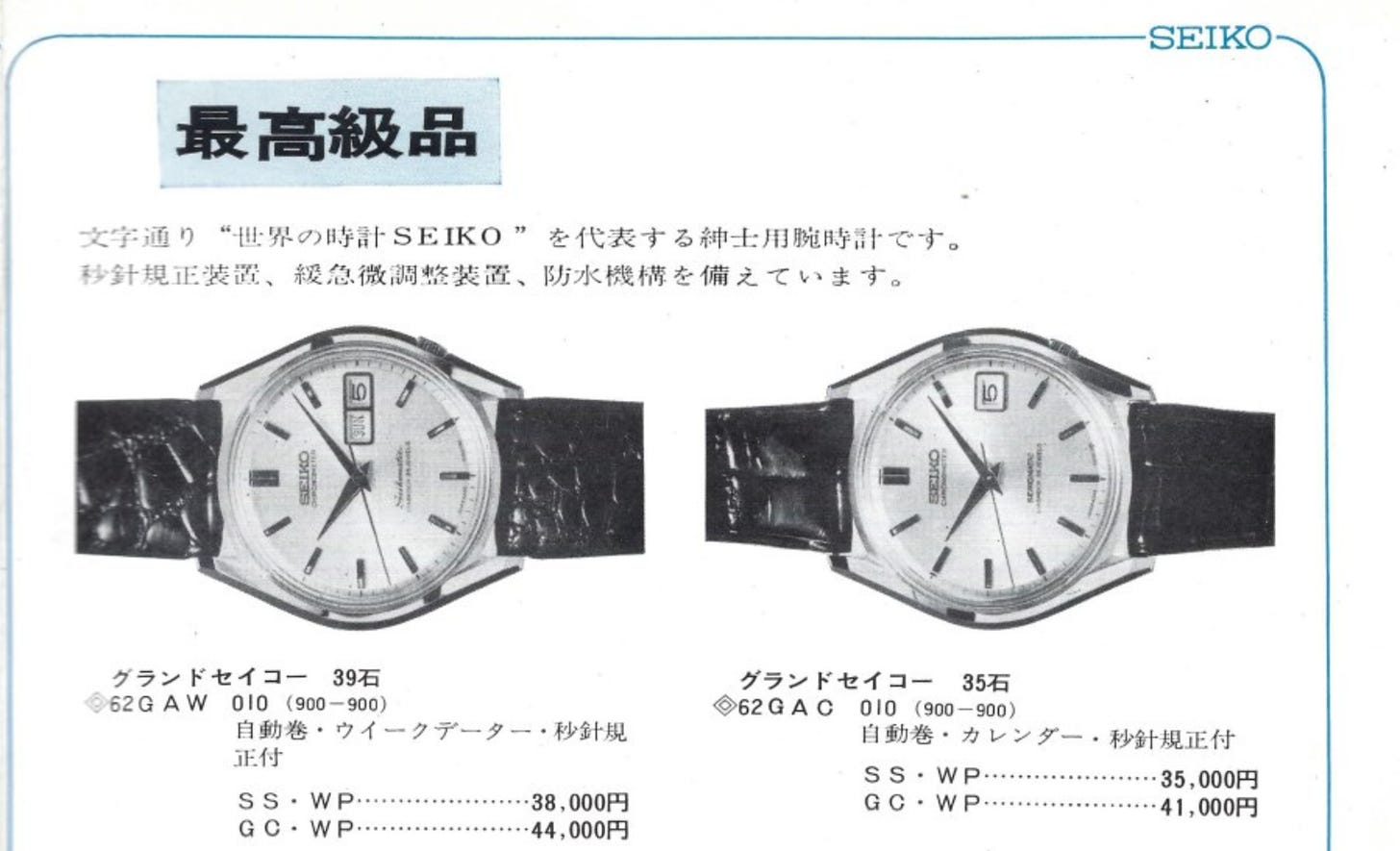
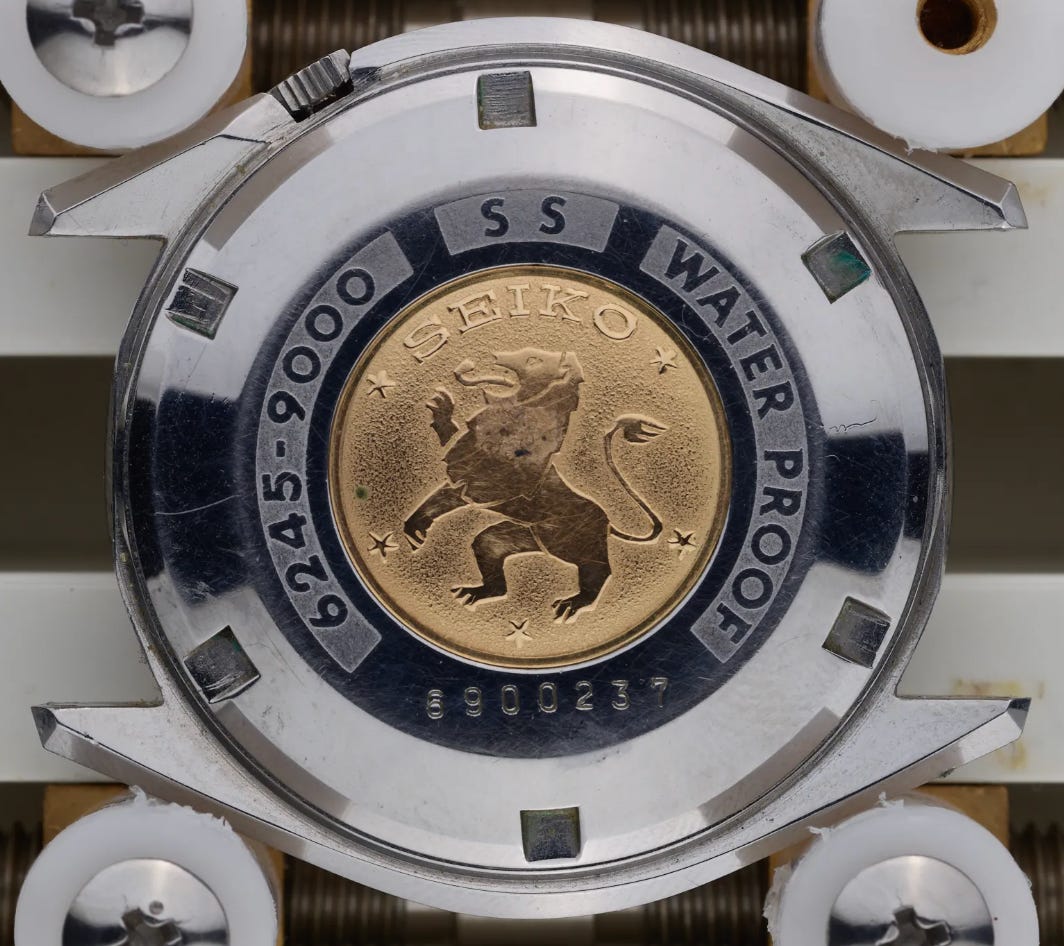
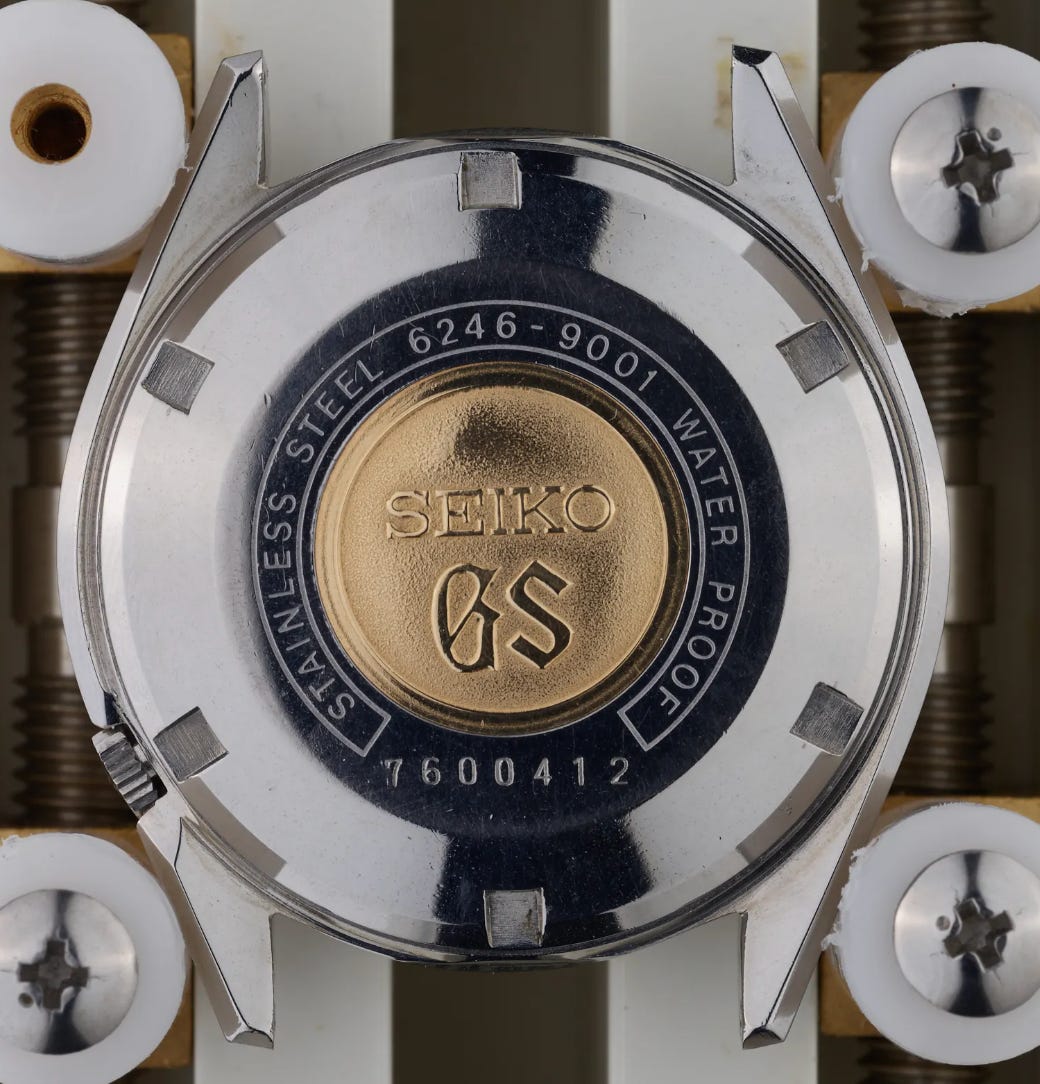
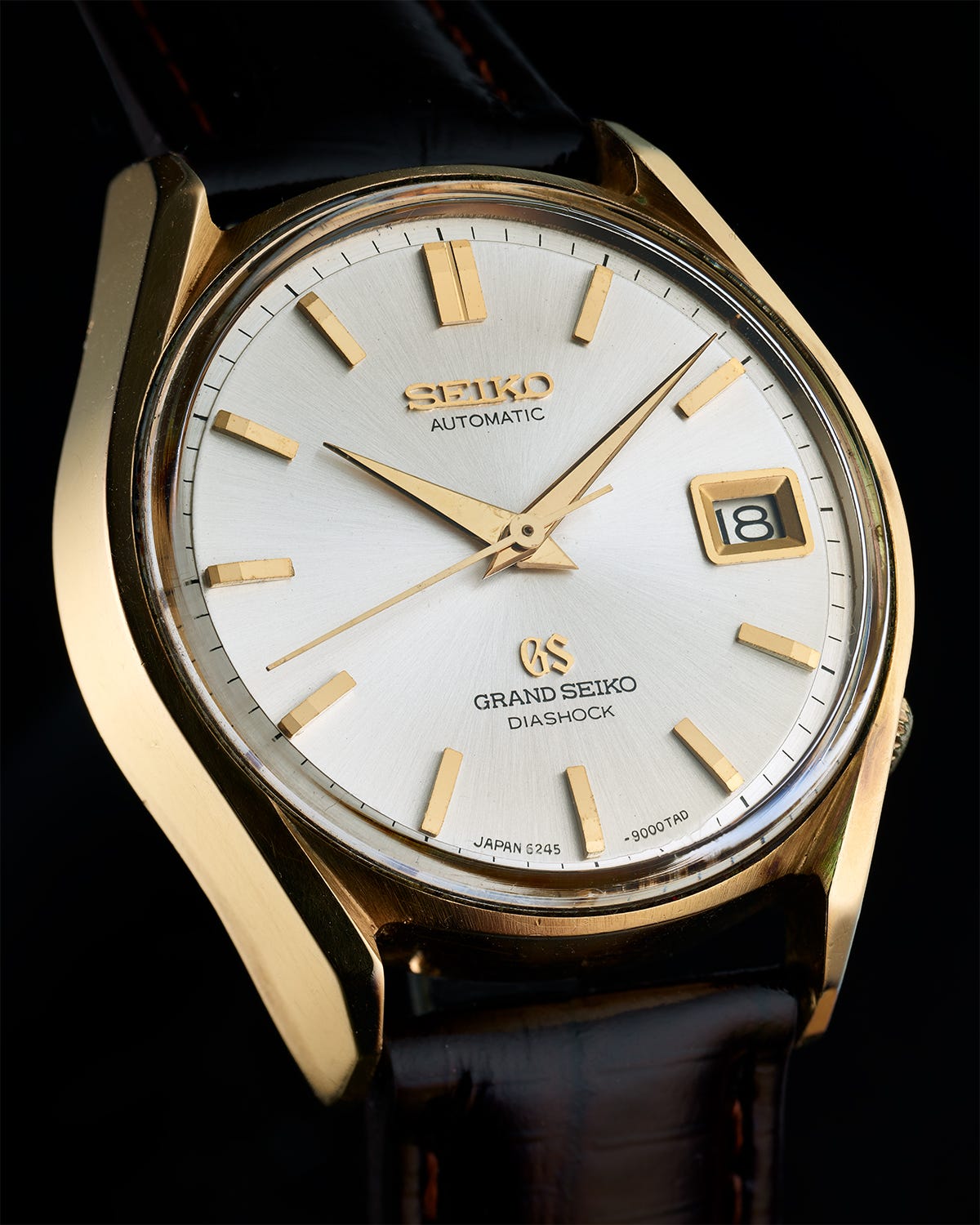
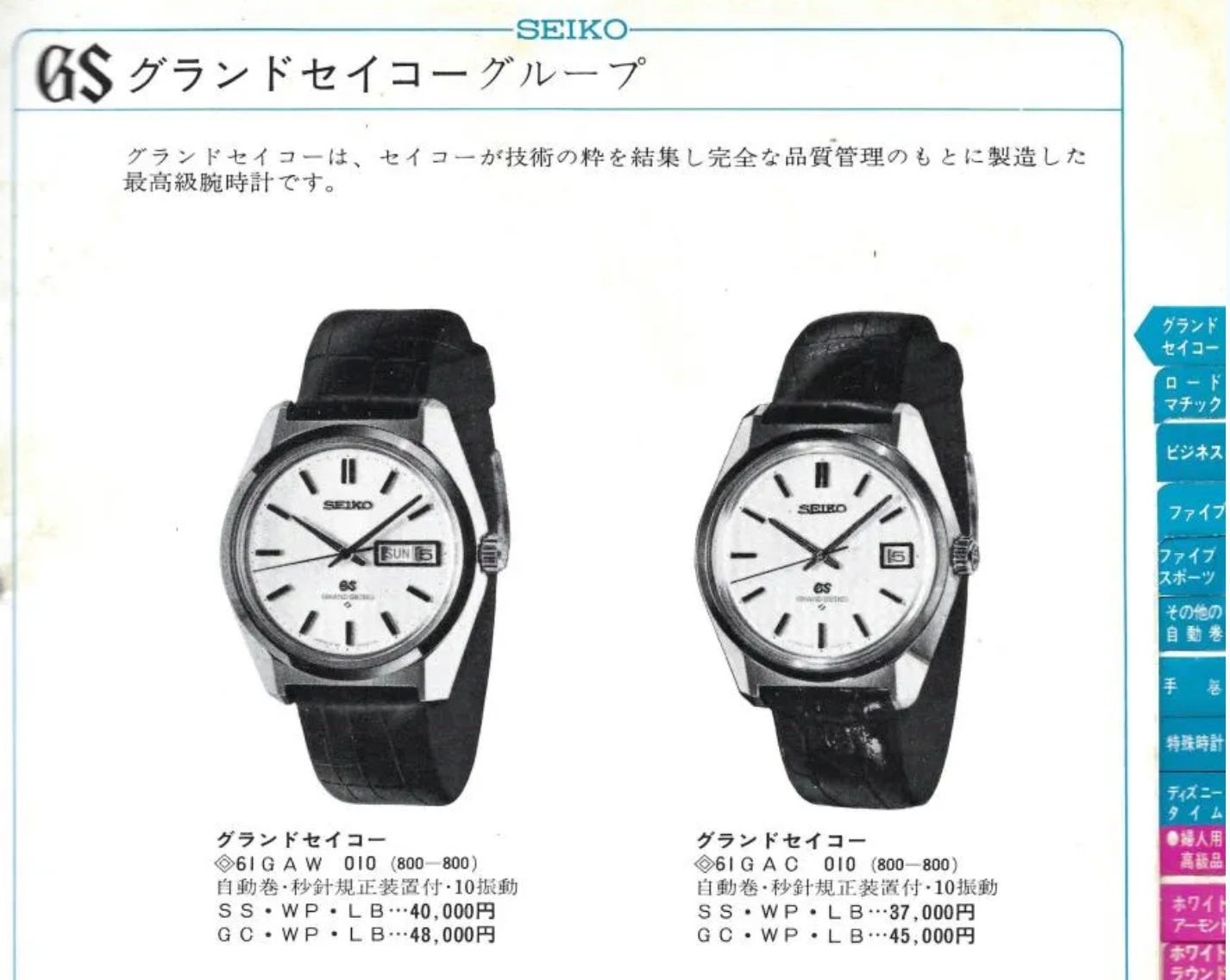
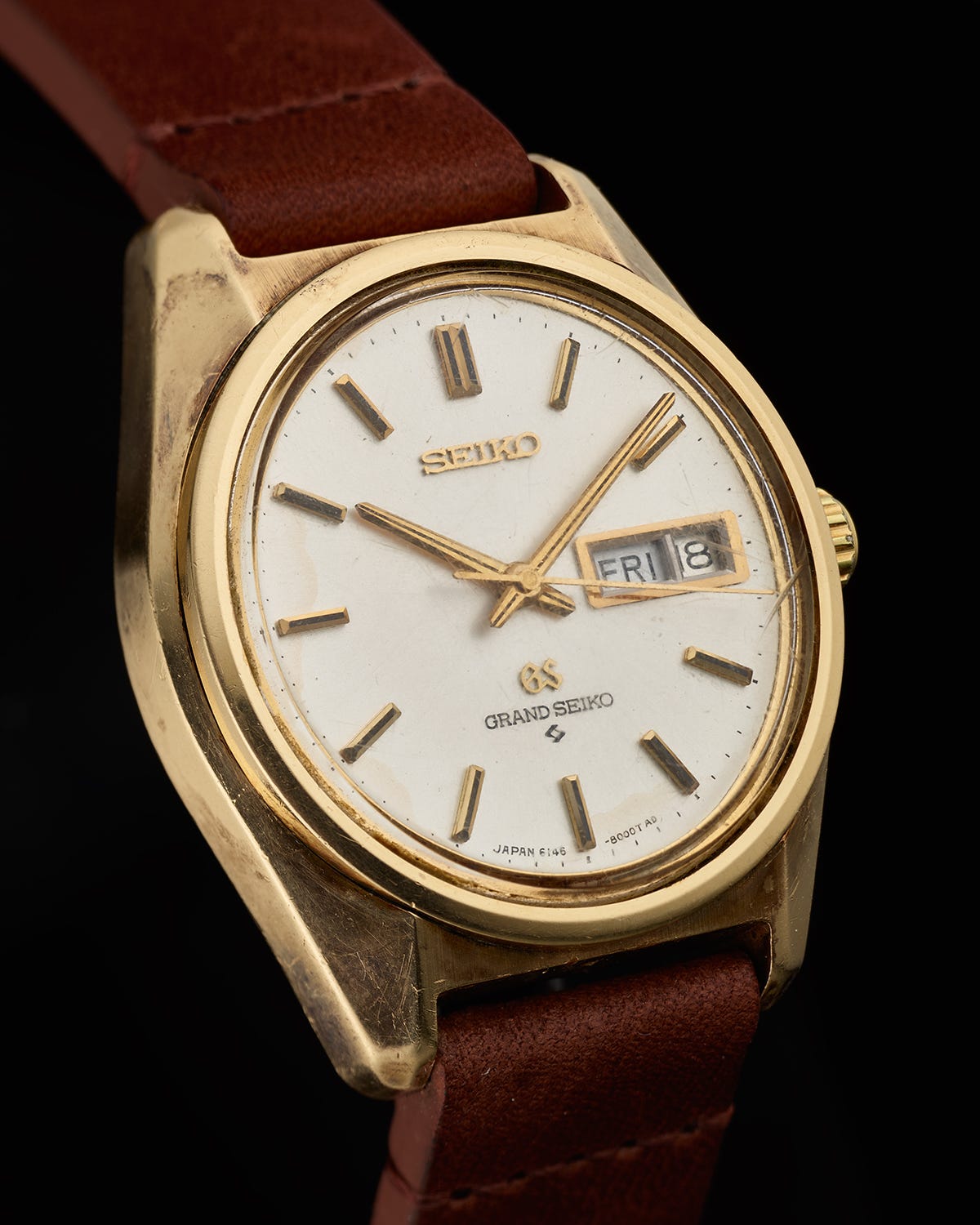
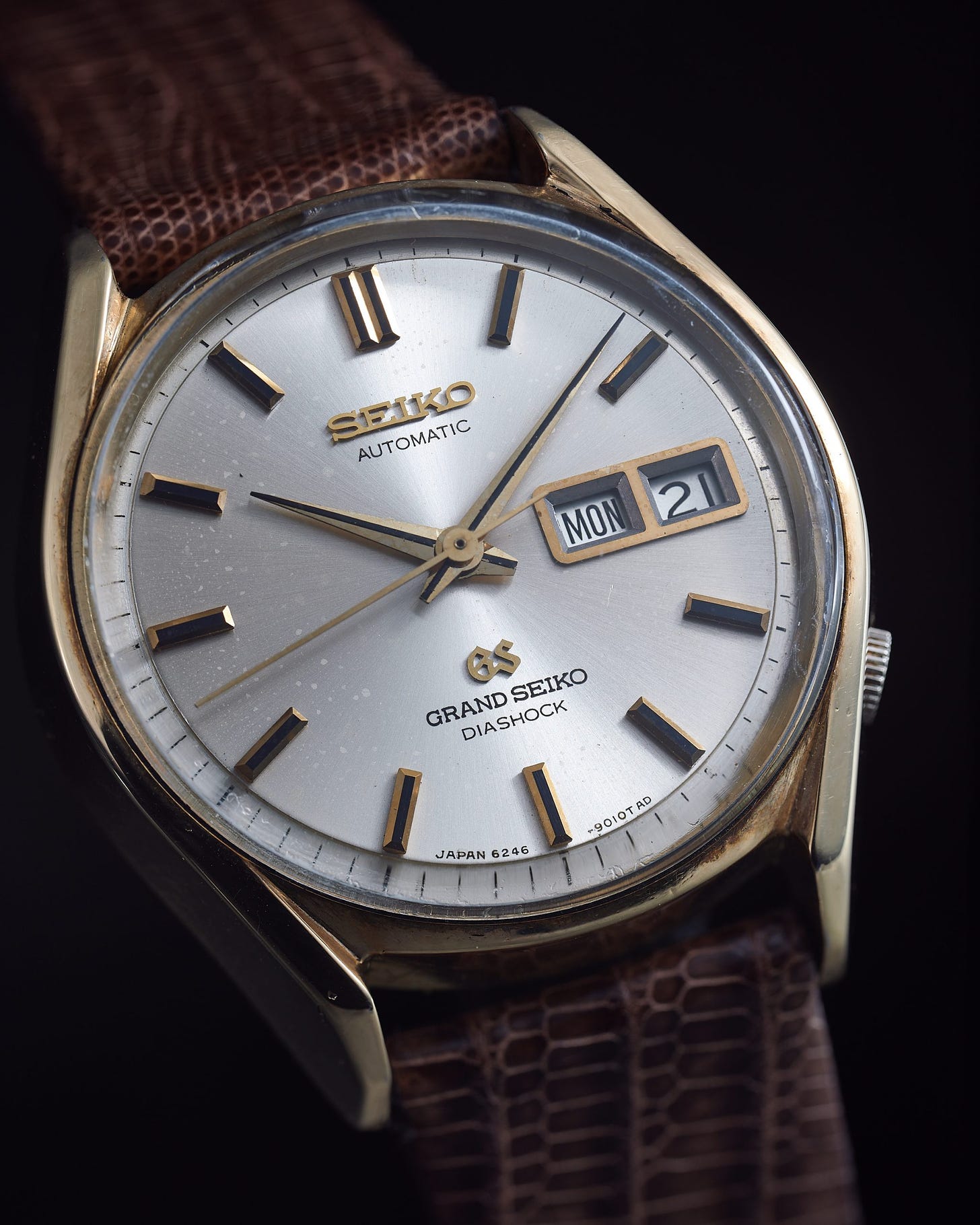
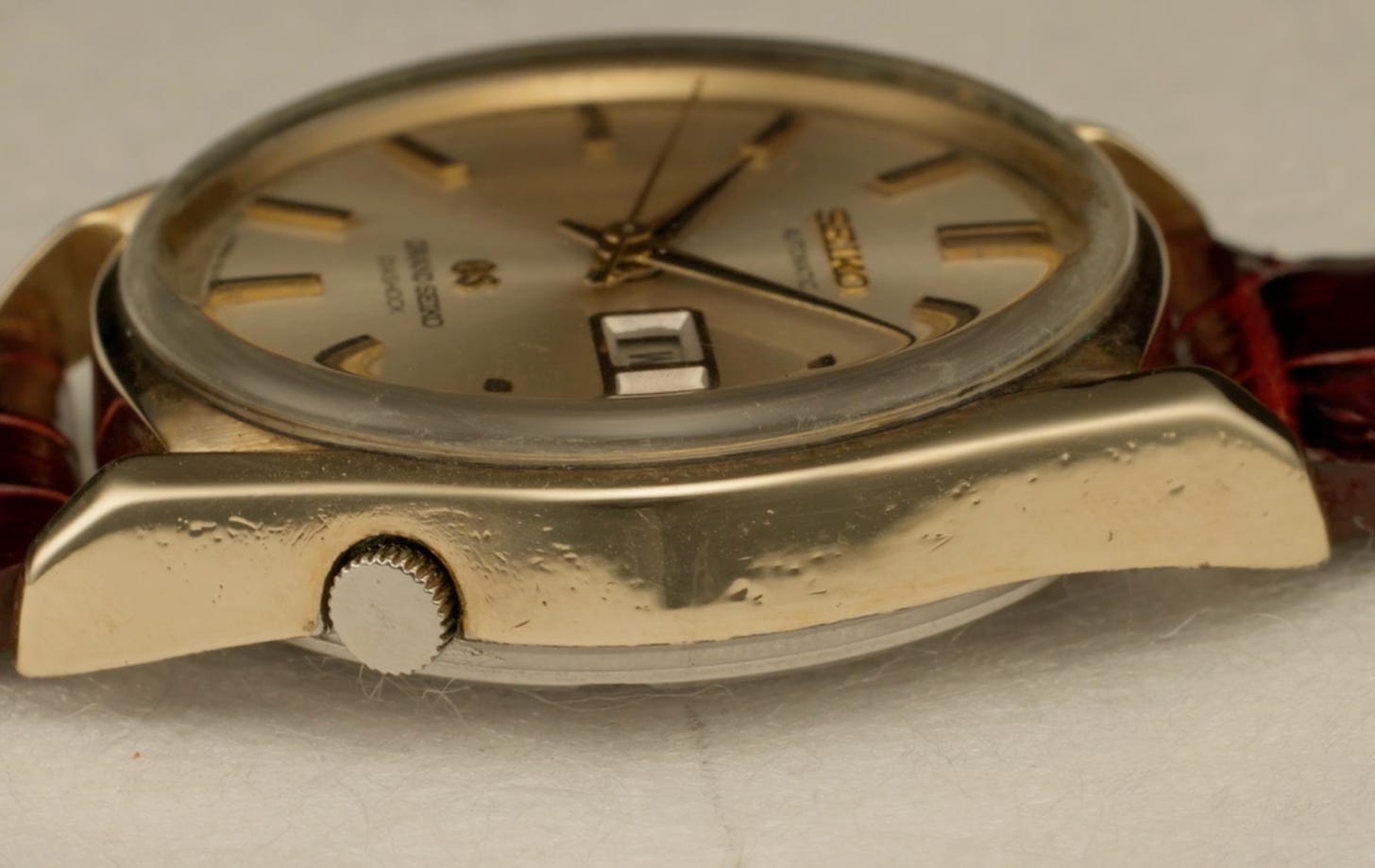
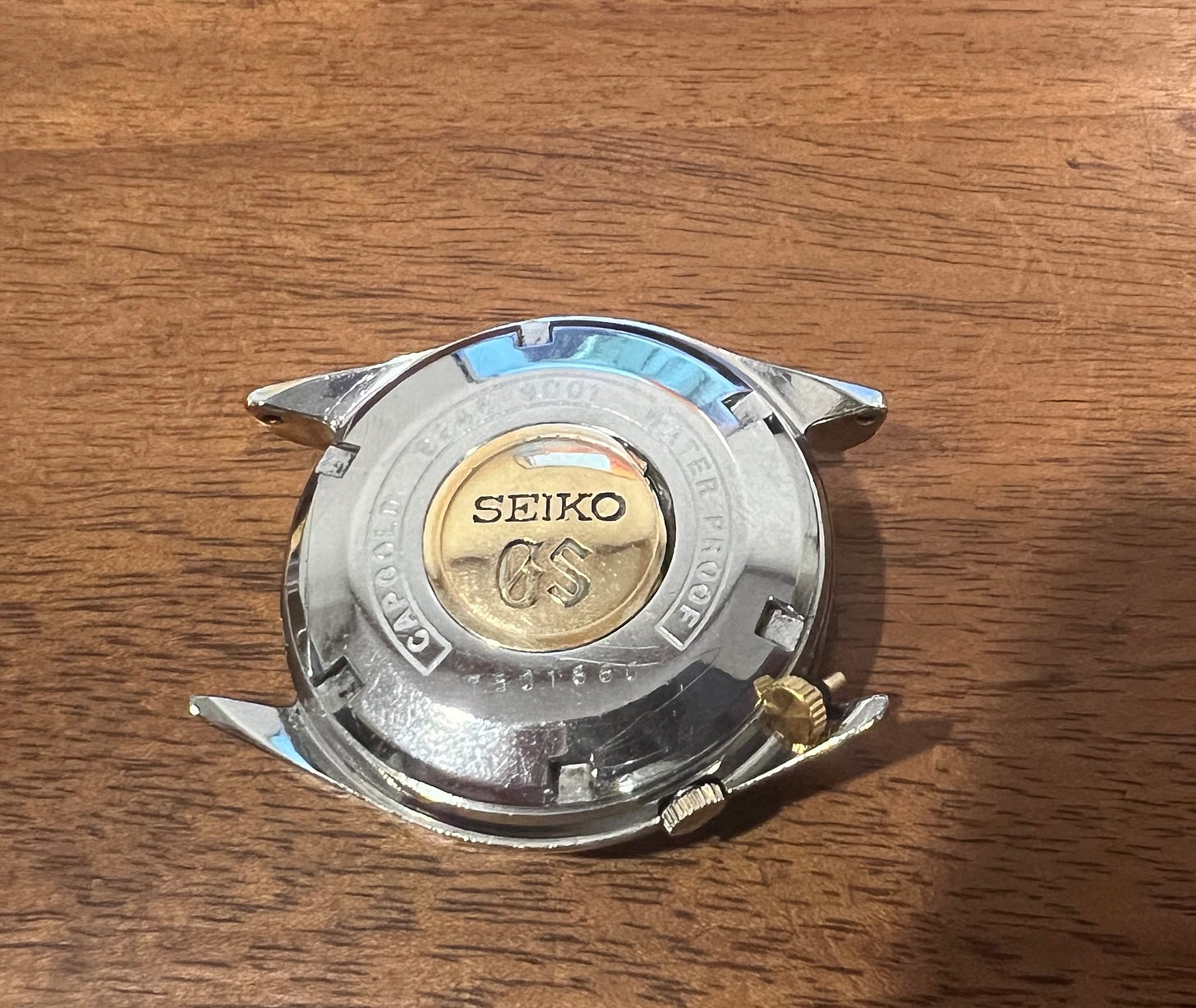


SOLD - Grand Seiko 6246-9001